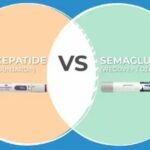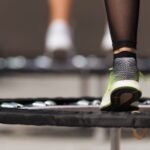Varicose veins are a common yet often overlooked condition that can affect anyone — especially those who spend long hours standing, sitting, or leading a sedentary lifestyle. While they’re often viewed as a cosmetic concern, varicose veins can also indicate poor circulation and venous insufficiency, which may cause discomfort, swelling, or even pain.
The good news? There are simple lifestyle changes and habits that can help you prevent varicose veins or slow their progression. Understanding how they develop — and when to see a specialist — is the first step toward keeping your veins healthy.
Understanding Varicose Veins
Varicose veins occur when the valves inside your veins weaken or get damaged, allowing blood to flow backward and pool in the lower legs. This leads to enlarged, twisted veins that often appear blue or purple beneath the skin.
While genetics play a role, several other factors increase the risk, including:
- Standing or sitting for long periods
- Lack of physical activity
- Hormonal changes (especially during pregnancy or menopause)
- Obesity
- Aging
- A history of blood clots or vein injury
Recognizing these risk factors helps you take proactive steps before symptoms develop.
Proven Ways to Prevent Varicose Veins
1. Stay Physically Active
Movement is the key to healthy circulation. Regular exercise helps your leg muscles pump blood back toward your heart, easing pressure on the veins.
Try this: Walking, swimming, cycling, or light strength training are excellent low-impact options that improve circulation without overstraining your legs.
2. Maintain a Healthy Weight
Excess weight adds pressure to your veins, making it harder for blood to flow efficiently. Keeping a healthy weight through balanced nutrition and exercise helps prevent vein strain.
3. Elevate Your Legs
Whenever possible, prop your legs on a pillow or footrest to improve venous return. Elevating your legs above heart level for 15 to 20 minutes a few times a day can significantly reduce swelling and discomfort.
4. Avoid Prolonged Sitting or Standing
If your job requires sitting or standing for long hours, make it a point to move every 30 minutes. Even simple movements — like flexing your ankles or taking short walks — can improve blood flow.
5. Wear Compression Stockings
Compression stockings gently squeeze your legs, helping veins and muscles move blood more effectively. They can be especially beneficial for people who spend a lot of time on their feet.
6. Eat a Vein-Friendly Diet
A balanced diet rich in fiber, antioxidants, and flavonoids can promote vein health. Include foods like citrus fruits, berries, leafy greens, and whole grains, and limit salt intake to prevent swelling.
7. Avoid Tight Clothing and High Heels
Tight clothing around your waist or legs can restrict blood flow. Similarly, high heels shift weight to your calves and limit circulation. Opt for comfortable shoes and loose-fitting clothes to promote better movement.
When Prevention Isn’t Enough
Even with a healthy lifestyle, some people may still develop varicose veins due to genetics or other medical conditions. Early symptoms — such as leg heaviness, cramping, visible veins, or swelling — shouldn’t be ignored. These are often signs of chronic venous insufficiency, a condition that can worsen over time if left untreated.
The Importance of Seeing a Vein Doctor
While lifestyle changes play a vital role, professional evaluation ensures that your veins are functioning properly. A specialized vein doctor can use diagnostic imaging (like ultrasounds) to identify circulation issues before they lead to more serious complications.
At this stage, expert guidance can make a huge difference. Treatments today are minimally invasive, fast, and virtually painless — allowing you to return to your normal activities on the same day. Procedures such as endovenous laser therapy, sclerotherapy, or radiofrequency ablation effectively close or remove damaged veins, restoring healthy blood flow and relieving discomfort.
If you notice any early signs of varicose veins, consulting a professional such as the El Paso Vein Doctor is essential. They specialize in diagnosing and treating vein conditions using the latest techniques, helping you achieve lasting comfort and confidence.
Long-Term Vein Care Tips
- Continue exercising regularly, even after treatment.
- Maintain a healthy weight and stay hydrated.
- Wear compression stockings during long travel or workdays.
- Schedule regular checkups with your vein doctor for preventive monitoring.
Taking these steps ensures that your circulation remains strong and your legs stay healthy for years to come.
Conclusion
Preventing varicose veins starts with small but consistent lifestyle choices — staying active, managing your weight, and being mindful of your posture and movement habits. However, prevention is only part of the equation. Professional care ensures that any developing issues are addressed early, before they cause lasting discomfort or complications.
If you’re concerned about your leg health or have visible veins that bother you, don’t wait for symptoms to worsen. Reach out to the El Paso Vein Doctor for expert evaluation and personalized treatment options. With modern medicine and the right care, you can enjoy healthy, pain-free legs and better overall circulation.
















